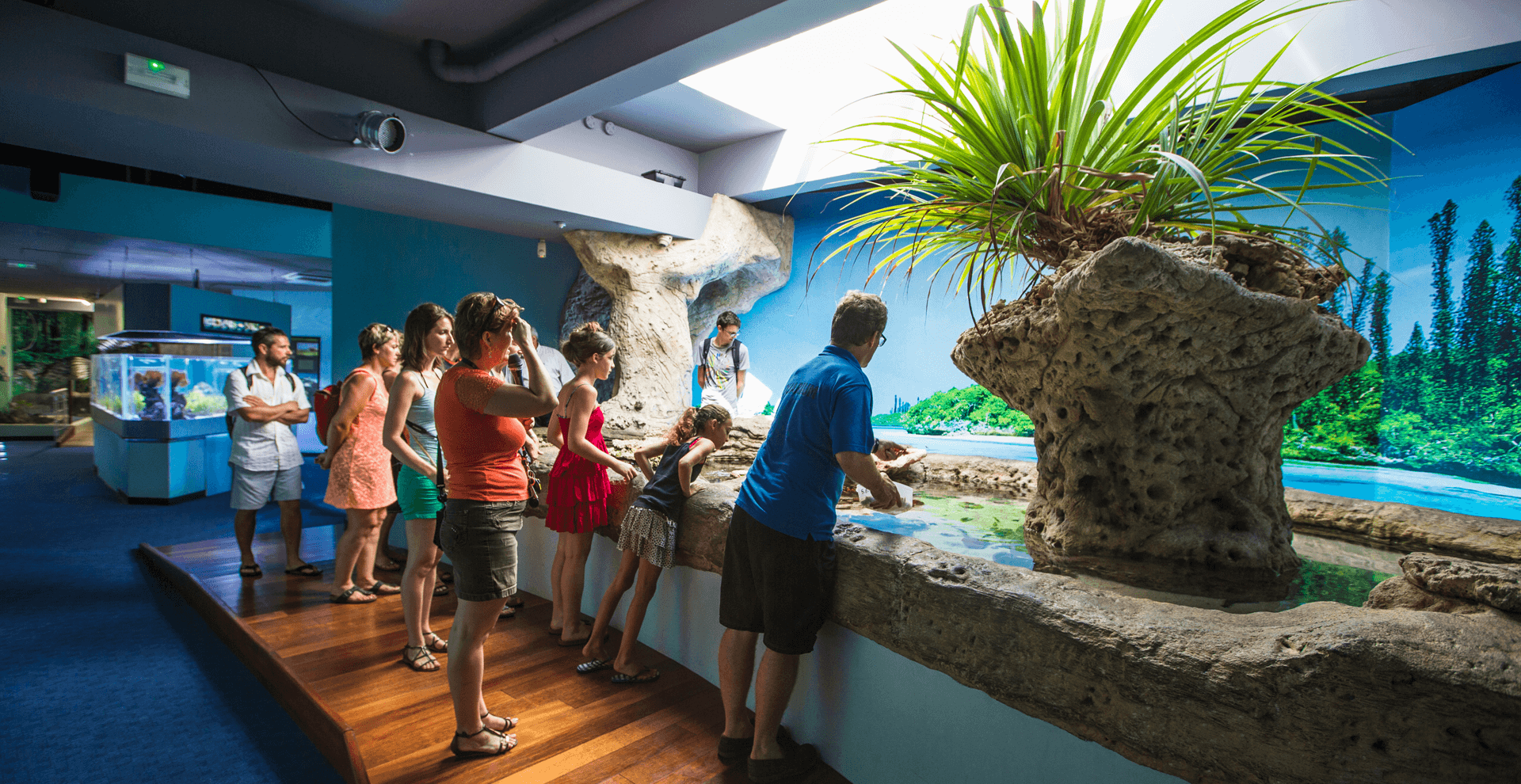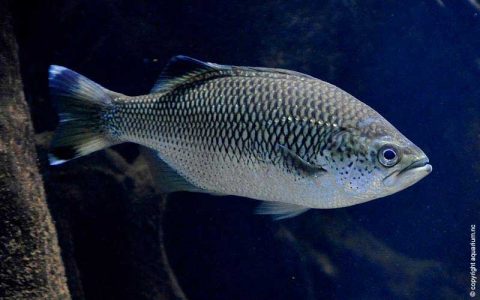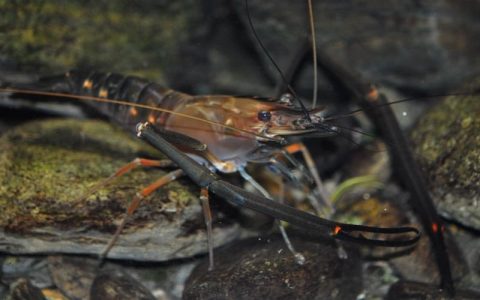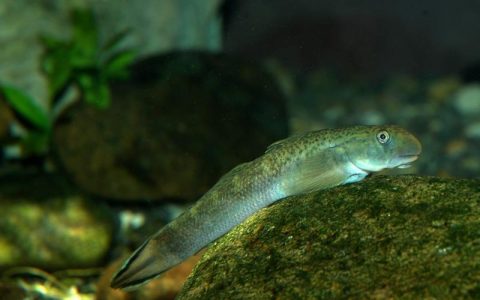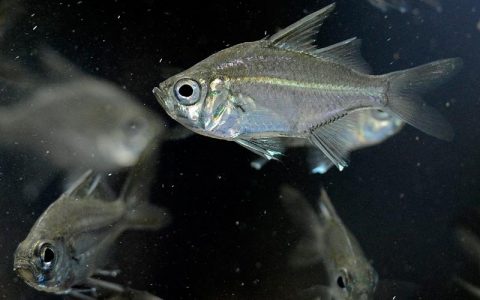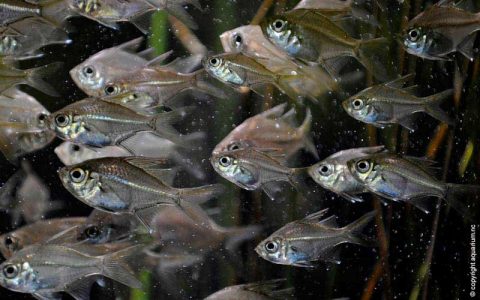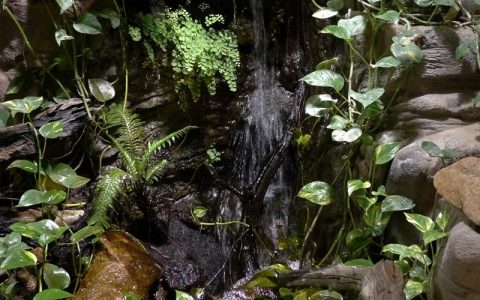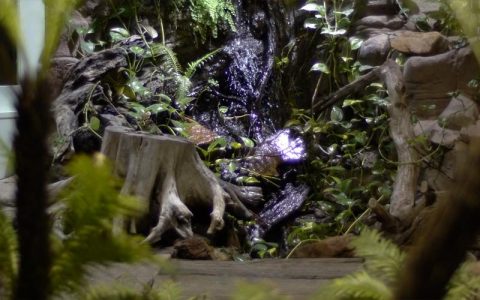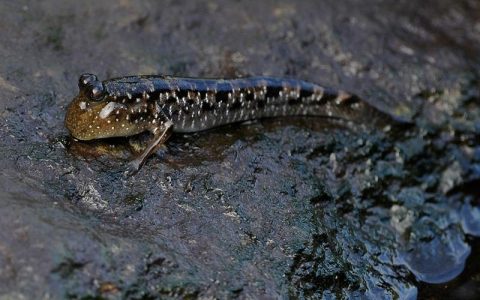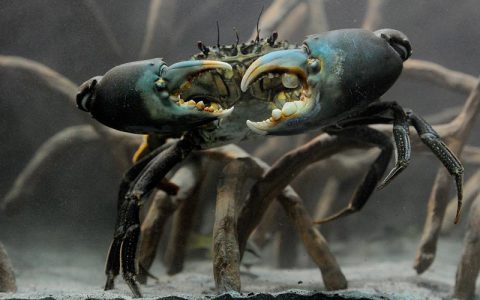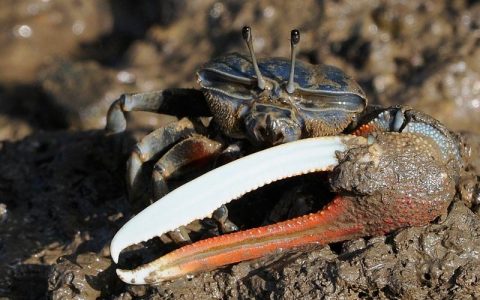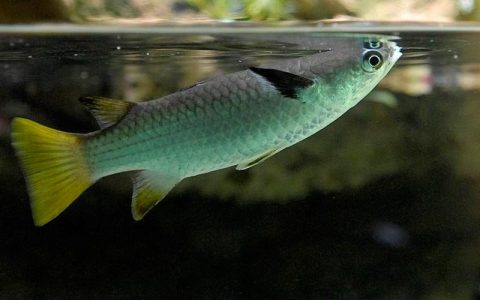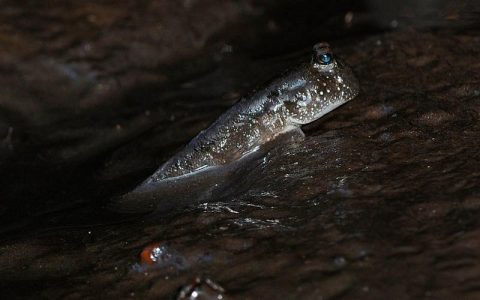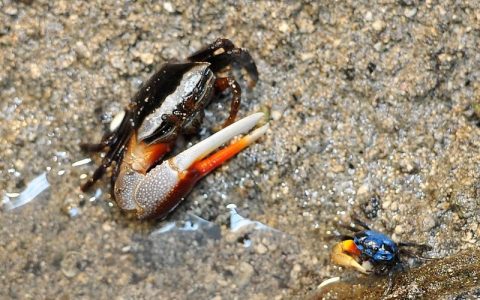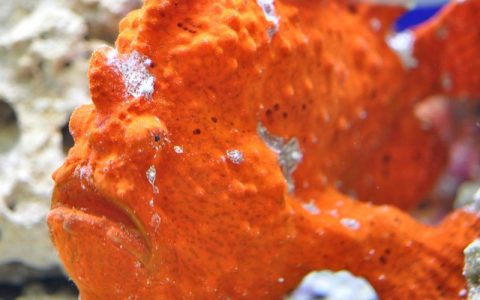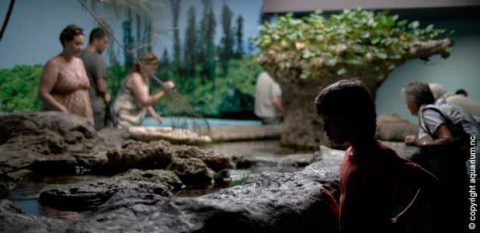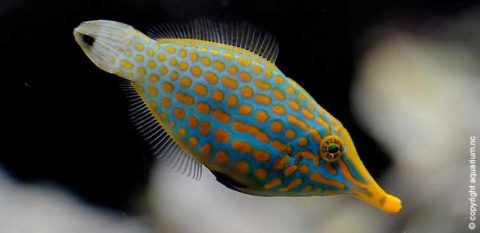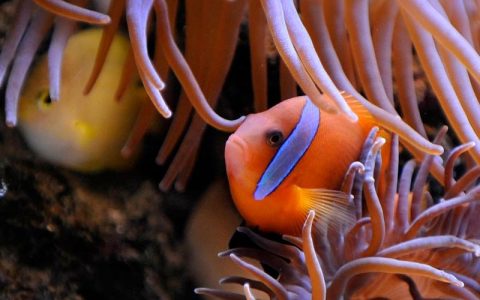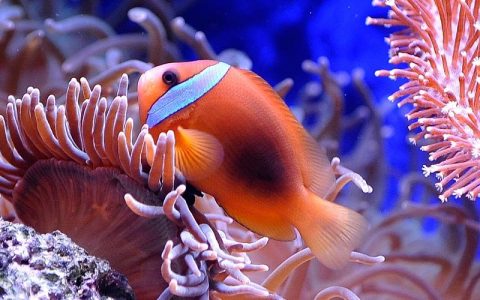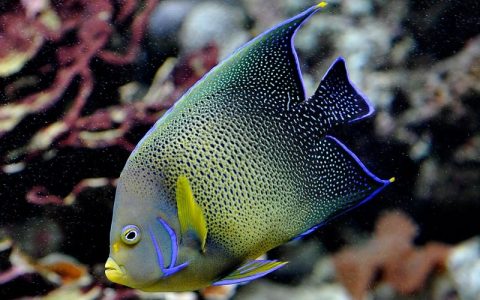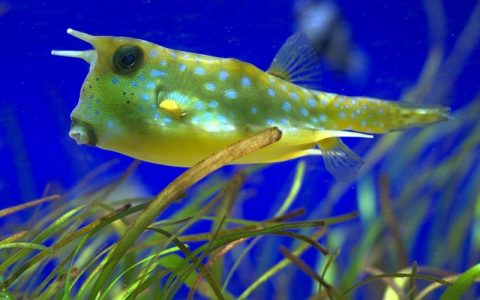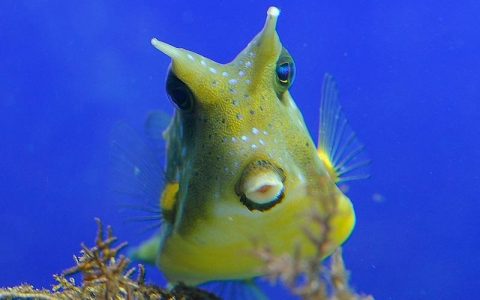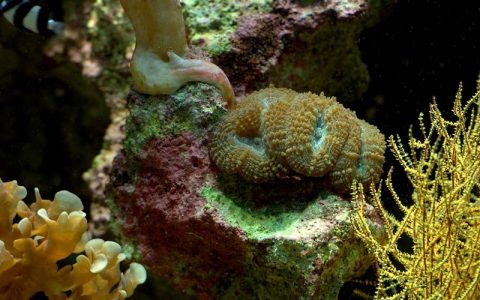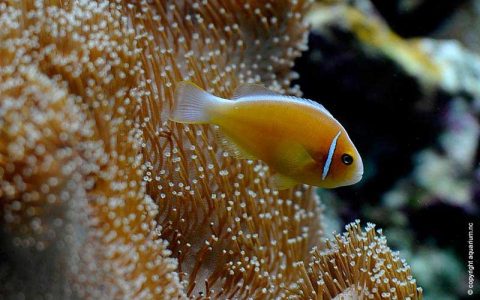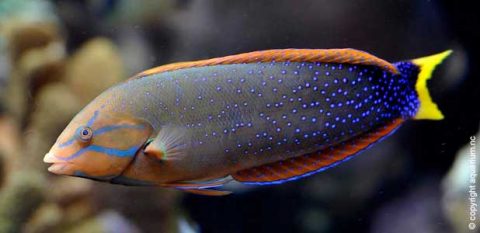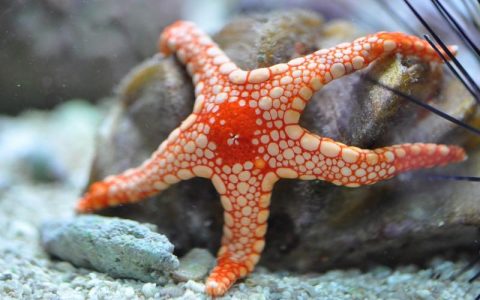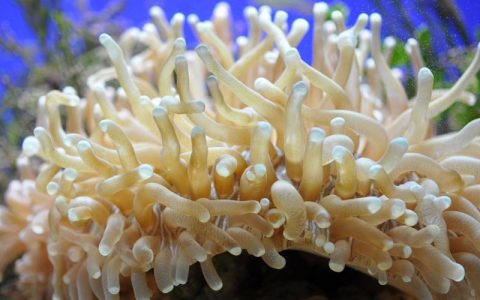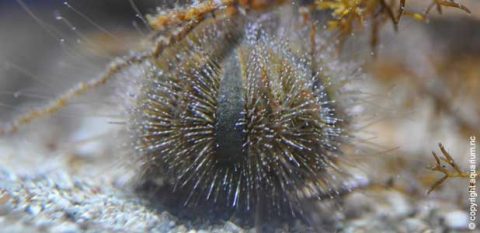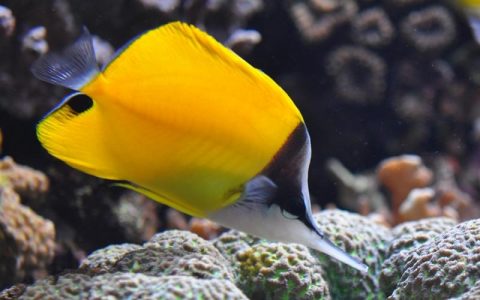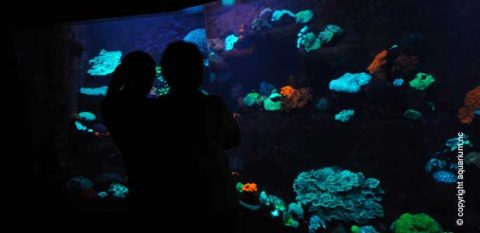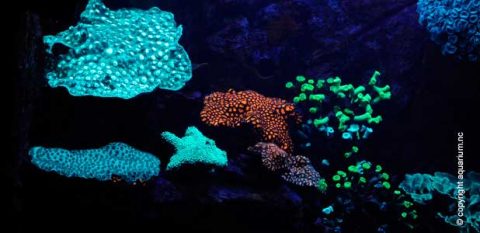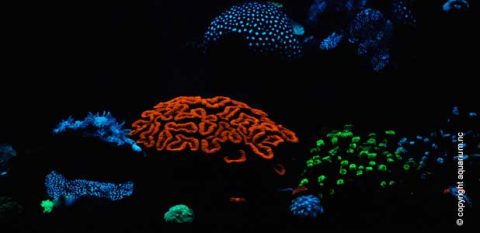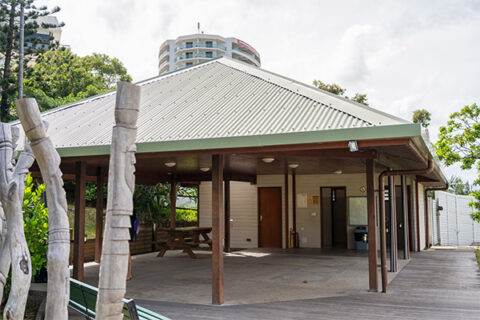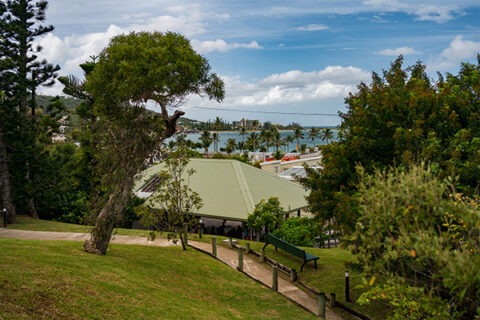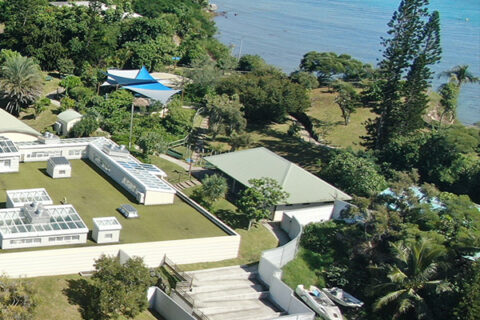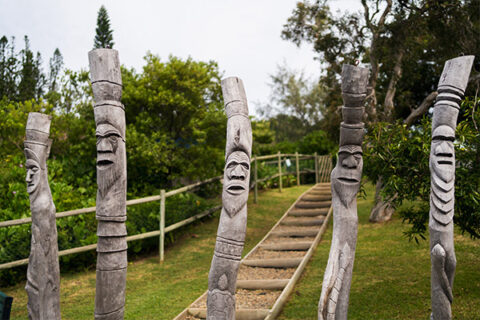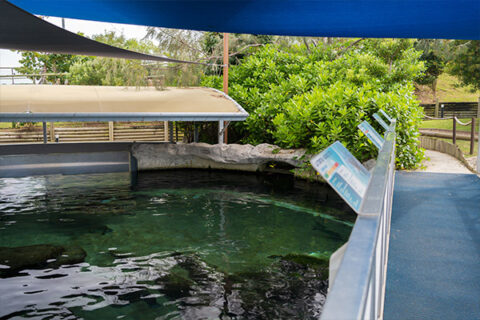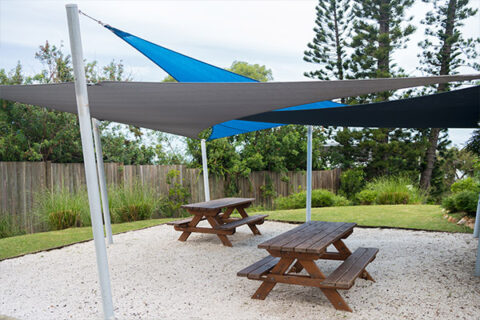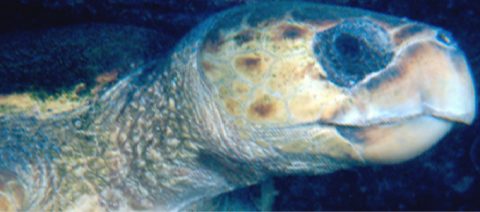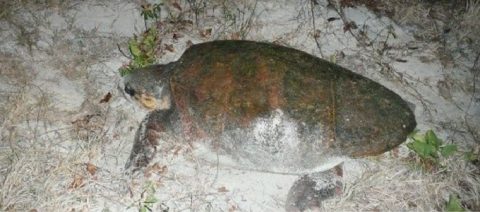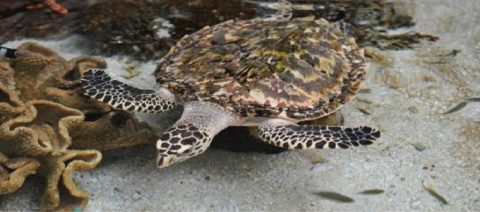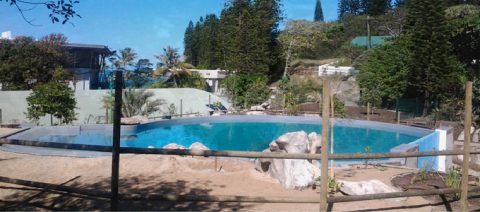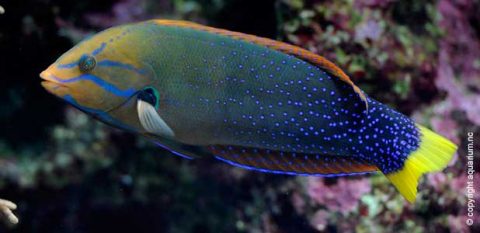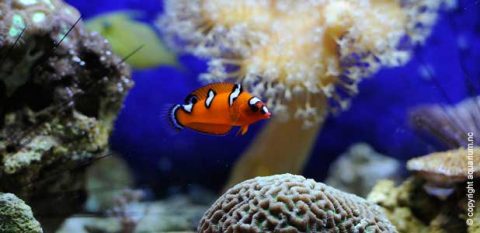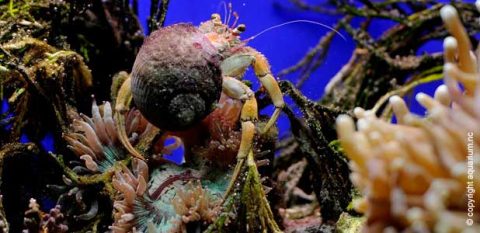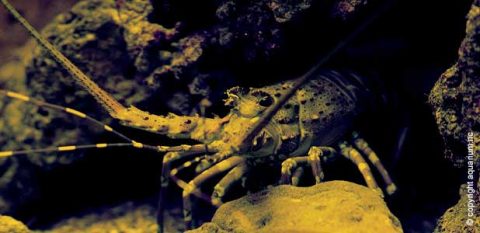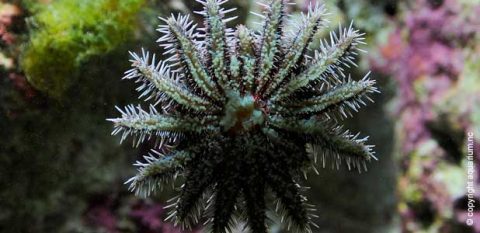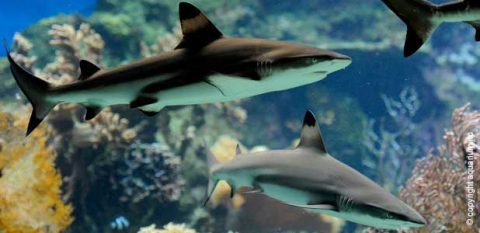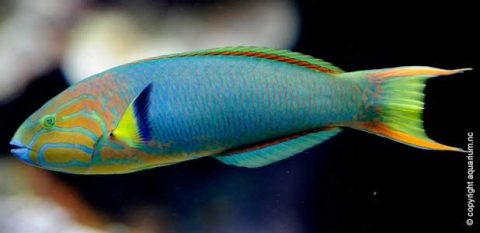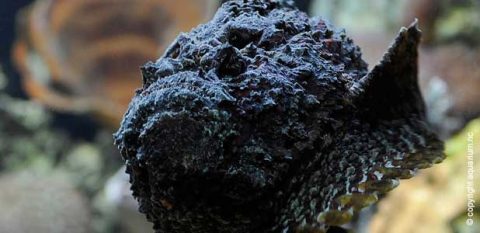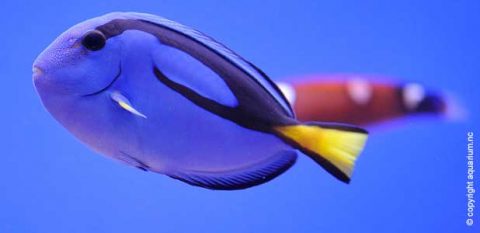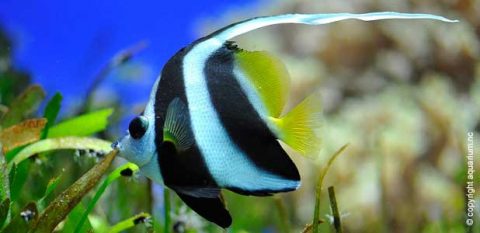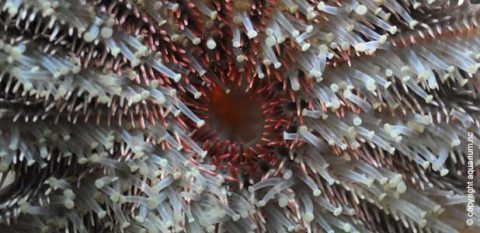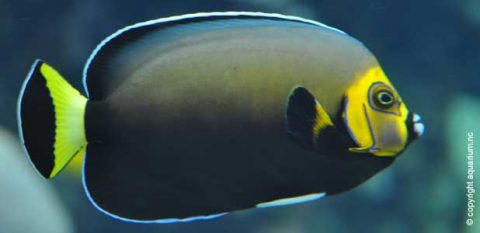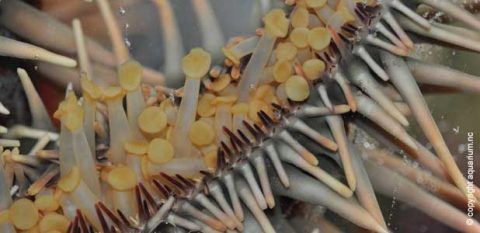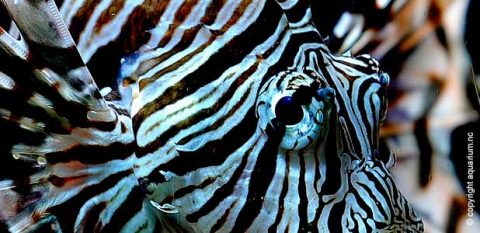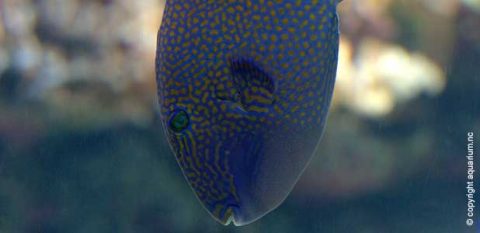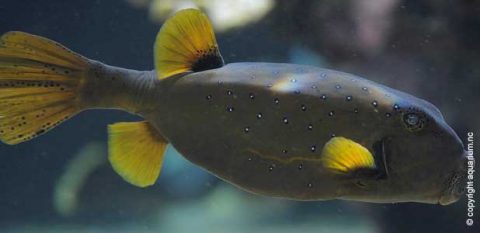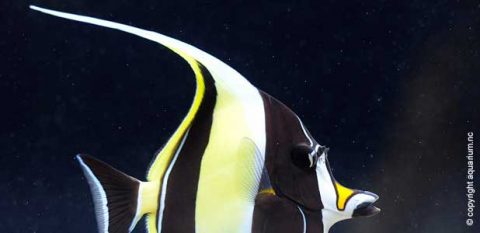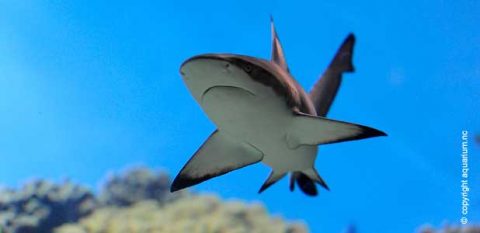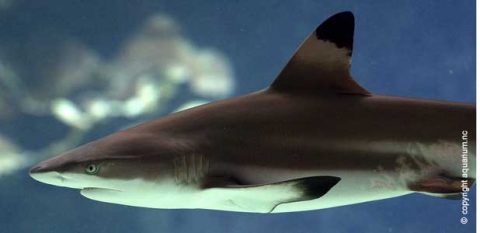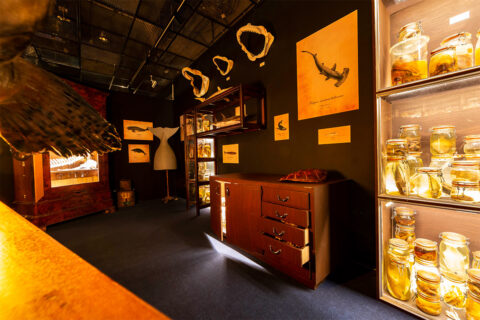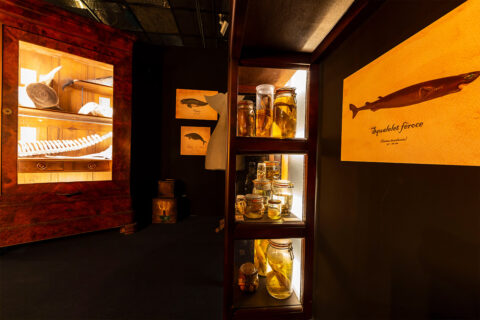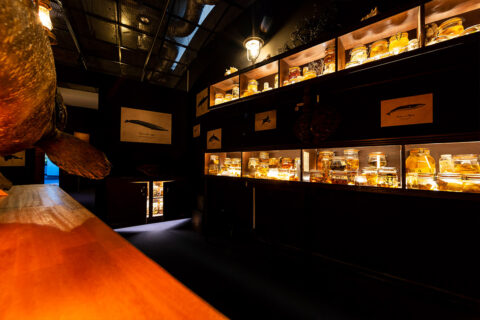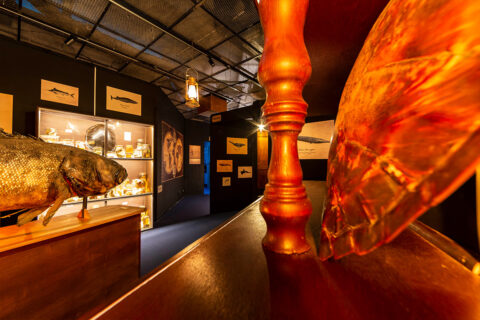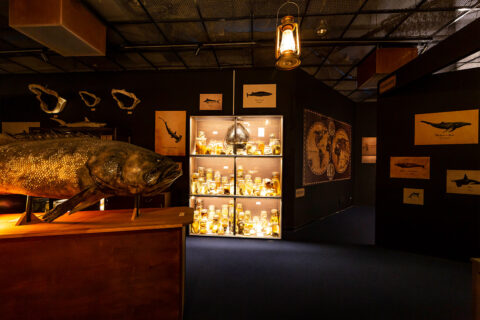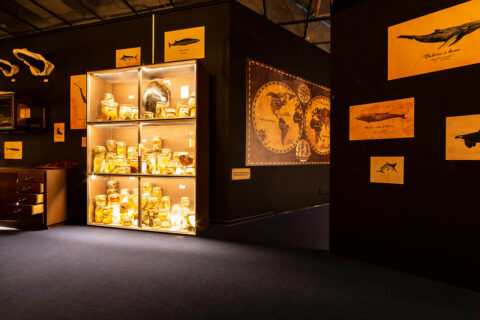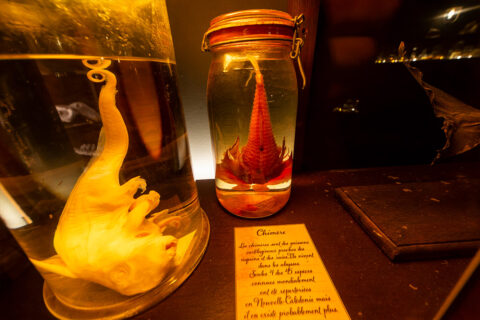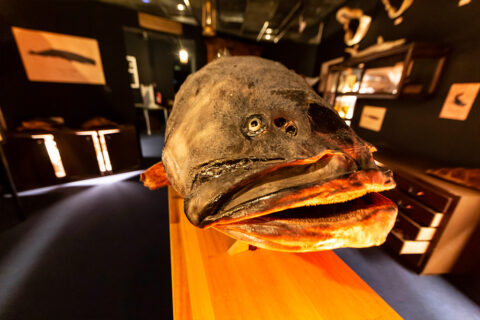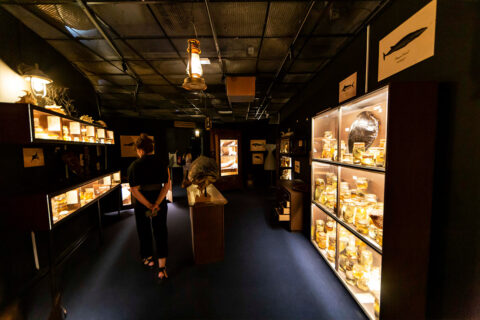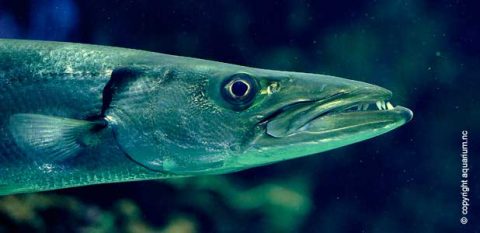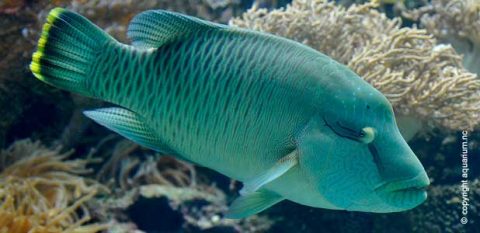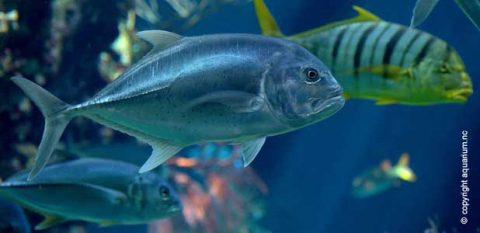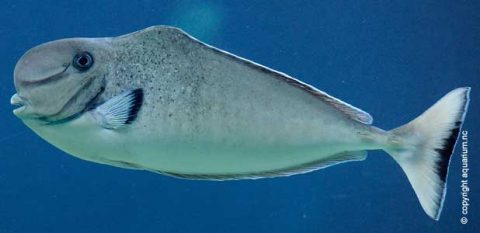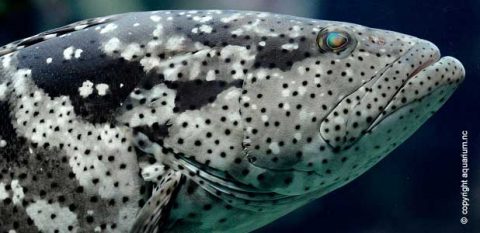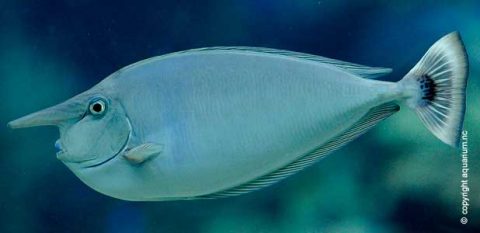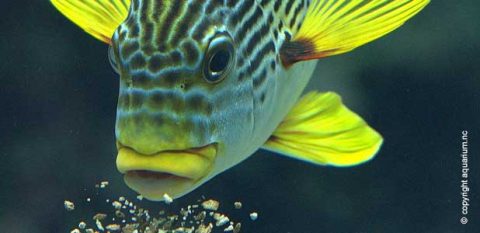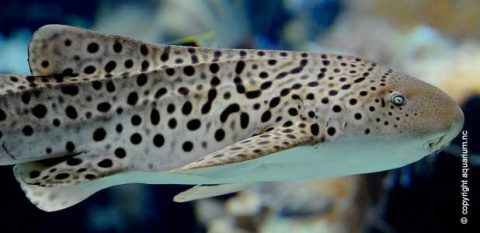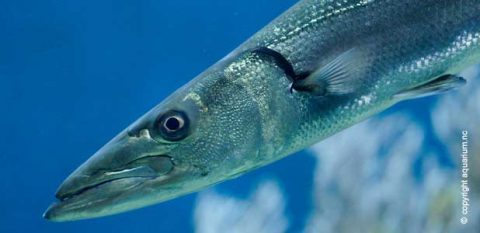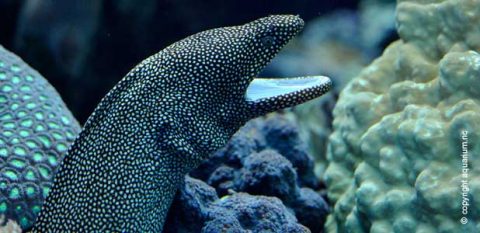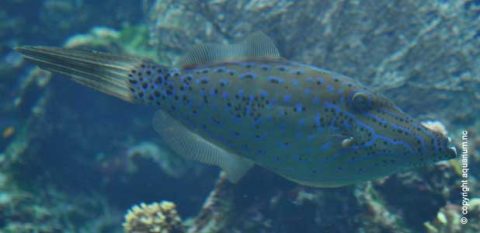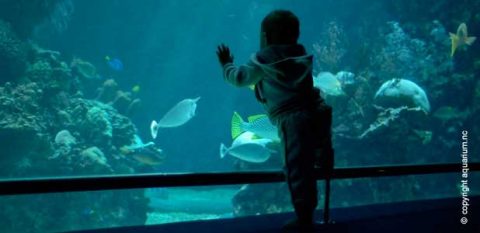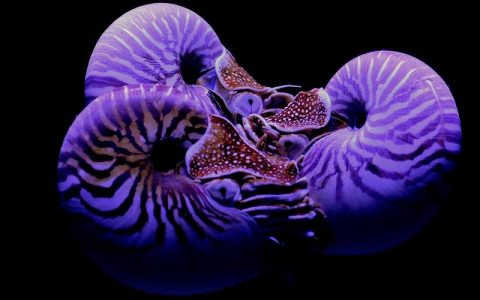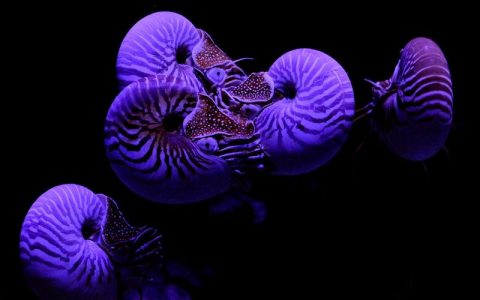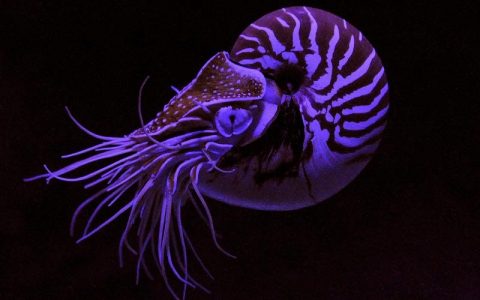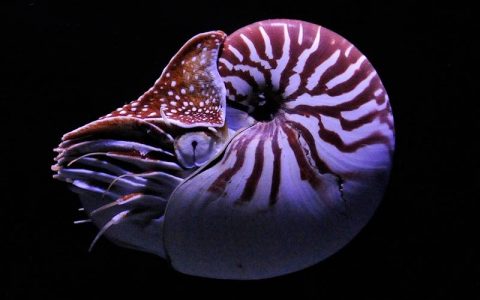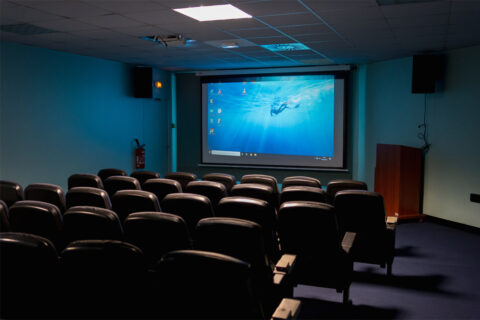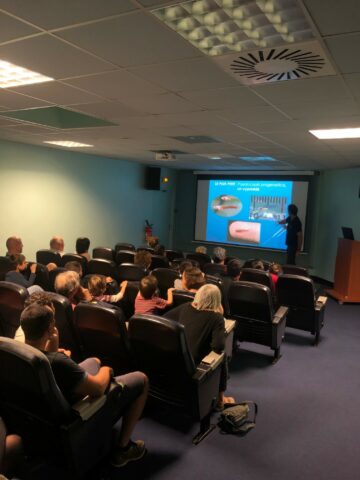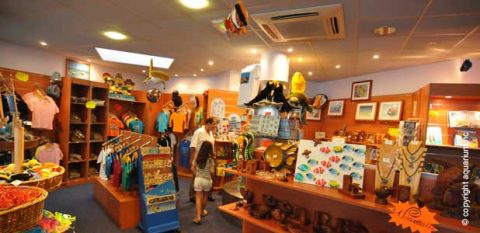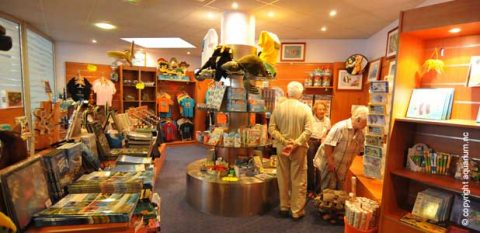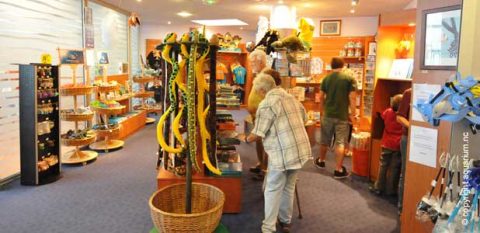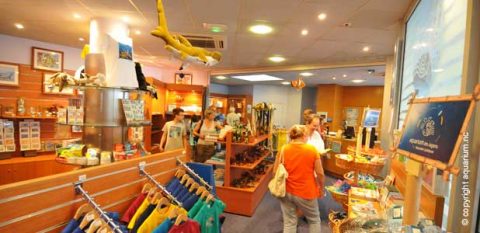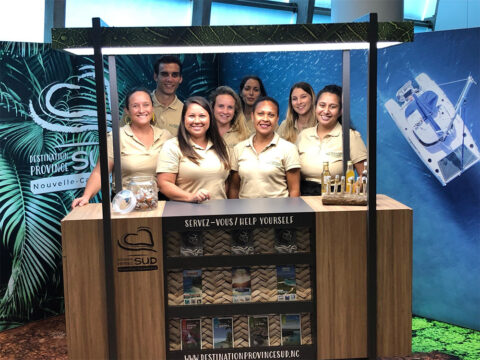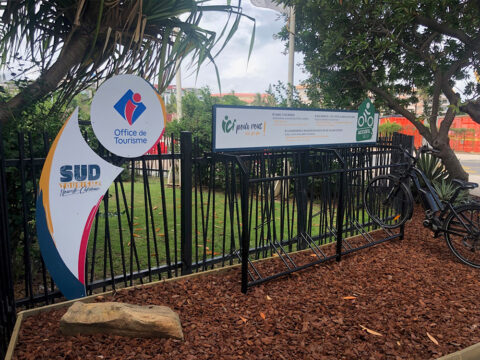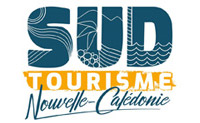
Préparer votre visite
Accès et horaires
Horaires d’ouverture
Lundi au vendredi de 13h à 17h
Samedi, dimanche, jours fériés (incluant les ponts), vacances scolaires et journées pédagogiques de 9h à 17h
Dernières admissions à 16h30
Adresse
61 Promenade Roger Laroque. Anse Vata B.P. 8185 Nouméa 98807 Nouvelle Calédonie
Contact
Tél : (687) 26 27 31
Fax :(687) 26 17 93
Nos Tarifs
Tarifs applicables depuis le 1 janvier 2022.
Deux catégories de tarifs sont applicables : les tarifs d’entrée classique et les tarifs d’entrée lors des nocturnes.
Tarifs d’entrée pour les visites
| Normal | Abonnement | |
|---|---|---|
| Adulte | 1.600 F | 7.200 F |
| Enfant (de 5 à 16 ans inclus) | 800 F | 3.600 F |
| Tarif réduit (Etudiants, séniors, comités d’entreprises conventionnés, personnes à mobilité réduite, personnes handicapées, demandeurs d’emplois, service civique, groupe de plus de 10 personnes) | 1.200 F | 5.400 F |
| Tarif Forfait (2 adultes et 3 enfants maximum) |
3.200 F | 15.000 F |
| Enfant de moins de 5 ans | Gratuit | Gratuit |
| Visite guidée pour groupe sur réservation uniquement (max 15 pers – 1h de visite) | 4.000 F +droits d’entrée |
– |
| Visite des coulisses, visite guidée individuelle, Fish Feeding, sur réservation uniquement (1h de visite) | 3.000 F par personne |
– |


Tarifs d’entrée lors des nocturnes/évènements
| Normal | |
|---|---|
| Adulte | 2.000 F |
| Enfant (de 5 à 16 ans inclus) | 1.000 F |
| Tarif réduit (Etudiants, séniors, comités d’entreprises conventionnés, personnes à mobilité réduite, personnes handicapées, demandeurs d’emplois, service civique, groupe de plus de 10 personnes) | 1.500 F |
| Tarif Forfait (2 adultes et 3 enfants maximum) | 4.000 F |
| Enfant de moins de 5 ans | Gratuit |
Plan de la zone de visite
Retrouvez les différentes salles de l’Aquarium des Lagons, et les espèces associées

Cliquez sur la section de votre choix pour en apprendre d’avantage
L'eau douce
Rafraichissez-vous dans les rivières et lacs calédoniens !
La zone eau douce constitue la première étape de votre voyage dans l’univers aquatique calédonien. Glissez au fil d’une rivière, reposez-vous au bord d’un lac et observez l’incroyable diversité des organismes qu’ils abritent. Dans une rivière du Sud, examinez les carpes à queue jaune et l’anguille tachetée filant comme l’éclair. Epiez les étranges crustacés qui peuplent les cours d’eau, chevrettes géantes et gracieuses crevettes des cascades.
Au fil de l’eau
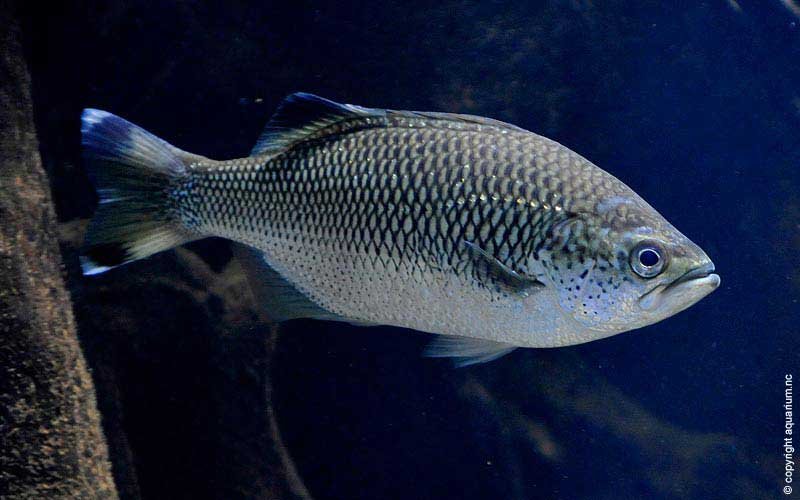
Plusieurs espèces de carpes peuplent ce bassin reconstituant la faune d’un cours d’eau de la Grande Terre.
Les carpes, plus connues sous l’appellation de doule à queue rouge, jaune ou noire, préfèrent les eaux relativement calmes.
Vous pourrez également croiser l’anguille tachetée, espèce la plus commune de Nouvelle-Calédonie.
Les creeks de la chaîne
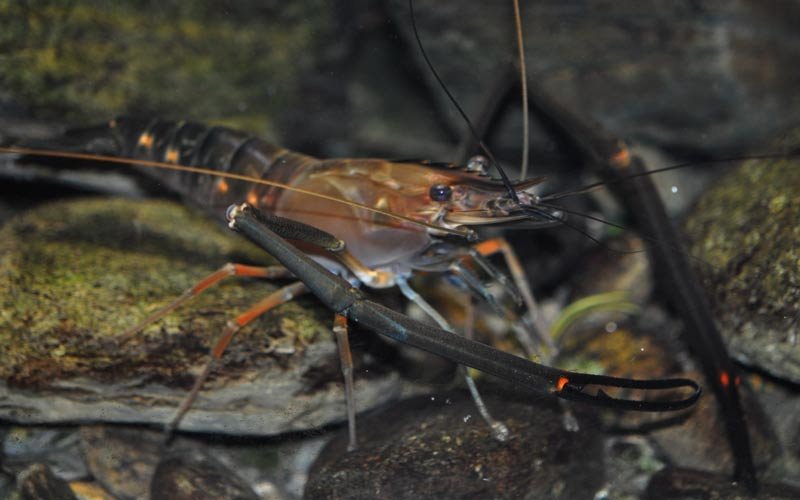
Cet aquaterrarium représente une partie terrestre avec un milieu de forêt humide et une partie aquatique où sont présentées crevettes et lochons et mulets noirs.
La crevette géante d’eau douce, encore appelée chevrette en Nouvelle-Calédonie, a pour nom latin Macrobrachium. Plutôt active la nuit, elle passe la journée à l’abri de la végétation.
Les crevettes des cascades se rencontrent sur les parois rocheuses sous les cascades où elles s’agglutinent en grand nombre. Pour se nourrir elles utilisent leurs pinces modifiées pour capturer les particules organiques contenues dans l’eau.
Un poisson a également été placé dans le bassin : le lochons à bec de lièvre. Le lochon se fixe sur les gros galets ou les rochers grâce à sa ventouse ventrale, raclant les algues dont il se nourrit.
Les rivières du Sud
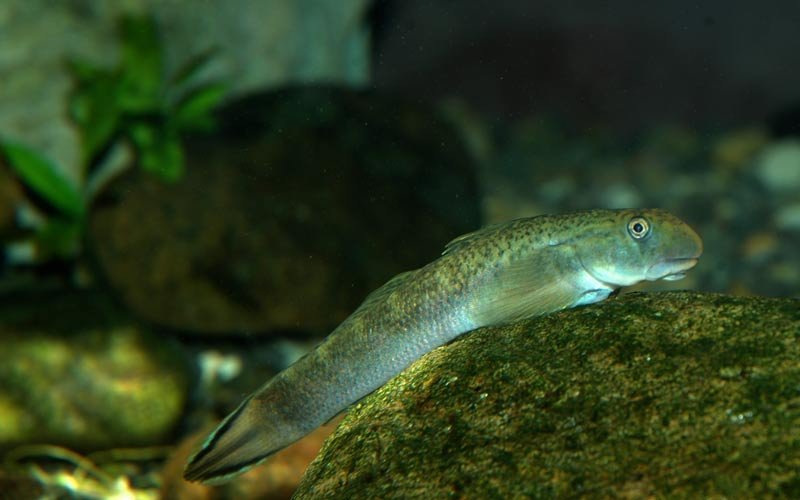
Avec ces roches caractéristiques (cuirasse) de couleur presque noire, les eaux douces du Sud ont un aspect très particulier que l’on retrouve aussi bien dans les cours d’eau que dans les dolines, ces dépressions circulaires qui peuvent être permanentes quand elles sont alimentées par les eaux souterraines.
Dans ce bac, on peut notamment voir l’ambassis, espèce que l’on trouve aussi bien dans les embouchures que dans les rivières et les mangroves. Elle vit en banc et migre vers l’eau douce.
Le saviez-vous?
Cent et plus
Il existe 125 espèces de poissons dans les lacs et rivières. Pour la plupart elles sont endémiques à la Nouvelle-Calédonie.
Ceci n’est pas un serpent
L’anguille n’est pas un serpent, comme son corps peut le laisser penser, mais un poisson. Elle met 10 à 20 ans pour atteindre sa maturité sexuelle et migre alors vers la mer. La reproduction a lieu en plein océan.
3320 km de long
Rivières et « creeks » de Nouvelle-Calédonie représentent 3 320 km. Le plus long court d’eau est le Diahot que la commune de Ouégoa, dans le Nord, fête tous les ans, au moment de l’Ascension.
La mangrove
Baladez-vous entre terre et mer !
Transition entre la mer et la terre, la mangrove, caractérisée par ses palétuviers, s’étend sur s’étend sur la bande littorale. Une multitude d’espèces animales vit au sein des racines de palétuviers. Garde-manger et nurserie, la mangrove compte environ 260 espèces de poissons. Amusez-vous à observez ces deux espèces qui semblent contrefaites mais sont parfaitement adaptées à leur milieu : les crabes violonistes et les périophthalmes.
Bord de plage
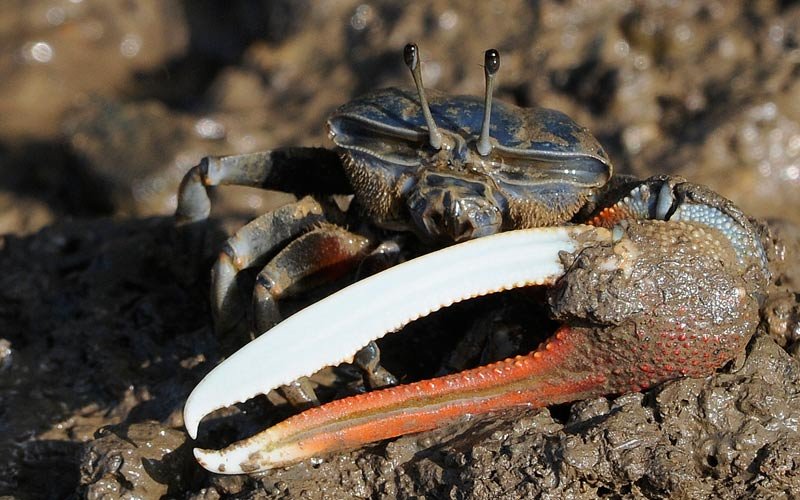
En Nouvelle-Calédonie, le crabe de palétuviers est surtout présent sur les côtes ouest et nord. Ses grosses pinces lui permettent d’attraper les mollusques et les crustacés dont il se nourrit. La dernière paire de pattes est aplatie en nageoires. Les adultes passent la plupart de leur vie entre les racines de palétuviers ou sur les plateaux situés entre la mangrove et le lagon. Ils s’abritent généralement dans des trous creusés dans la vase.
Le bac mangrove
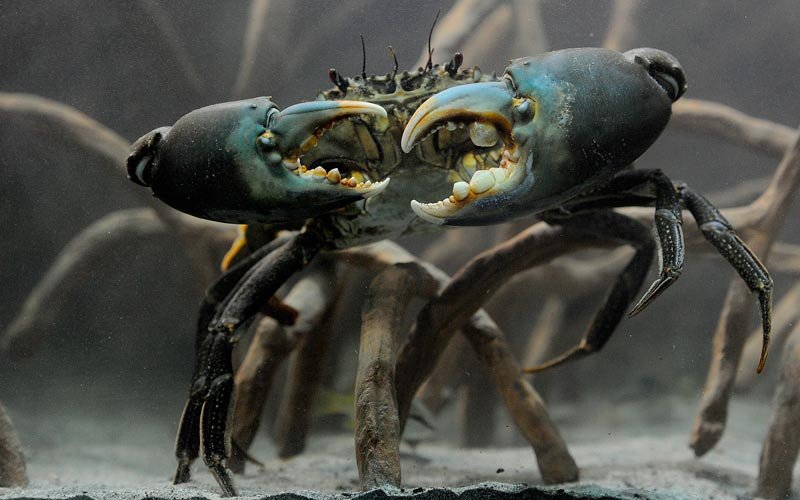
La particularité de ce bac est de posséder un système de marées, indispensable à la survie des palétuviers : les racines de ces derniers doivent être régulièrement hors de l’eau sous peine de s’asphyxier. Les majestueuses sélènes évoluent entre les racines échasses des palétuviers.
Les crabes de palétuvier

En Nouvelle-Calédonie, le crabe de palétuviers est surtout présent sur les côtes ouest et nord. Ses grosses pinces lui permettent d’attraper les mollusques et les crustacés dont il se nourrit. La dernière paire de pattes est aplatie en nageoires. Les adultes passent la plupart de leur vie entre les racines de palétuviers ou sur les plateaux situés entre la mangrove et le lagon. Ils s’abritent généralement dans des trous creusés dans la vase.
Le saviez-vous?
Cœur de Voh
La mangrove calédonienne s’étale sur 200 km2 25 000 hectares sans les tannes. Elle est célèbre dans le monde entier par le cœur qu’elle dessine naturellement dans la commune de Voh.
Station d’épuration
La mangrove a un rôle écologique important. Elle a un fort pouvoir d’épuration. Elle sert de filtre aux eaux chargées de sédiments. Elle est le point de départ de nombreuses chaînes alimentaires.
De l’eau dans les bajoues
Le periophthalme sort souvent hors de l’eau à marée basse : il a développé des nageoires lui permettant de se déplacer en sautant. Pour que ses branchies ne soient pas à sec, il accumule de l’eau dans ses bajoues. Comme les grenouilles, il est également capable de respirer par la peau. Ses yeux ont une structure double, lui permettant de voir aussi bien sous l’eau qu’à l’air libre.
La zone côtière
Découvrez les petits fonds calédoniens !
Admirez la vie sur les récifs frangeants ! Les poissons demoiselles à rayures noires et blanches ou encore bleu flashy semblent en mouvement perpétuel. Les seiches se déplacent majestueusement. Les étonnants poissons vaches pointent leurs cornes vers les visiteurs. Les labres si joliment courbés en arc de cercle paraissent effectuer un ballet aux codes secrets… Vous pourrez également admirer la plus ancienne colonie corallienne au monde « née » en aquarium (1966).
Le plaisir
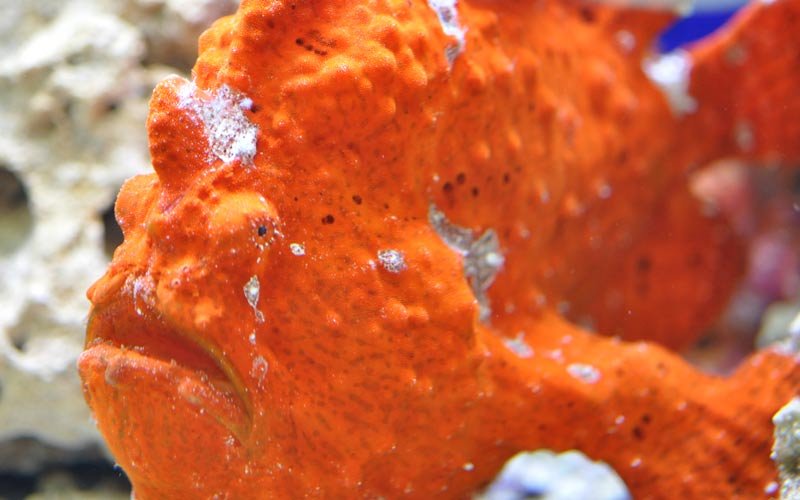
Votre voyage vous amène maintenant au niveau du récif frangeant. Bienvenus au royaume des coraux qui sont bel et bien des animaux, « Dans ce monde corallien tout est vie et mouvement, lumière et couleur. Les coraux, représentés par un nombre considérable d’espèces différentes affectent les formes les plus variées. Les une évoquent le végétal… buissons aux tiges colorées de bleu, de mauve, de jaune, de vert. (…)
D’autres encore font apparaître de troublantes analogies avec de belles concrétions calcaires de cavernes souterraines… lames festonnées, tuyaux d’orgue, drapées, volutes, urnes, stalagmites, formes déliées ou massives. », René Catala, fondateur de l’aquarium.
Les poissons vaches dans l’herbier
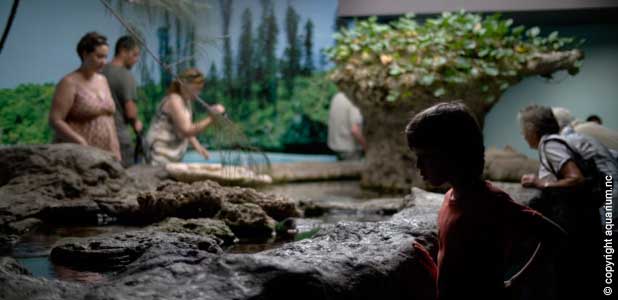
Les herbiers, sont surtout situés dans les fonds meubles près de la côte, dans les baies et devant les mangroves.
C’est dans cette herbier/ que vous pourrez rencontrer un animal tout à fait étrange, le poisson vache qui arbore fièrement ses 2 cornes.
Récif frangeant
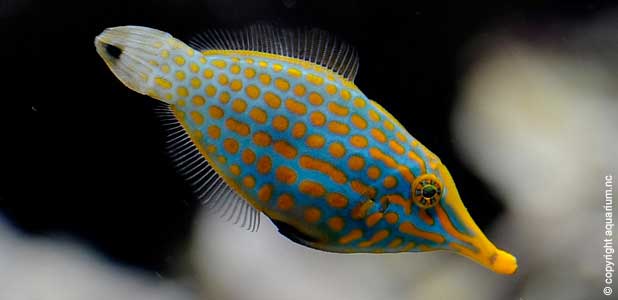
Votre voyage vous amène maintenant au niveau du récif frangeant. Bienvenus au royaume des coraux qui sont bel et bien des animaux, « Dans ce monde corallien tout est vie et mouvement, lumière et couleur. Les coraux, représentés par un nombre considérable d’espèces différentes affectent les formes les plus variées. Les une évoquent le végétal… buissons aux tiges colorées de bleu, de mauve, de jaune, de vert. (…)
D’autres encore font apparaître de troublantes analogies avec de belles concrétions calcaires de cavernes souterraines… lames festonnées, tuyaux d’orgue, drapées, volutes, urnes, stalagmites, formes déliées ou massives. », René Catala, fondateur de l’aquarium.
Le saviez-vous?
Prairies sous-marines
Tous les végétaux sous l’eau ne sont pas des algues. Dans les herbiers poussent des plantes à fleurs, les phanérogames, dans lesquelles vivent nudibranches, gobies, quelques espèces de labres,des bossus et le picot gris dont la chair est très appréciée. C’est dans ces prairies que paissent les vaches marines ou dugongs ; ainsi que lestortues vertes.
Mademoiselles ?
Le nom de demoiselle a été attribué à ce type de poisson en raison de leur petite taille, leurs de leurs couleurs voyantes, de leurs formes toutes en rondeurs et de leur aspect plaisant.
Bêches de mer
Ces organismes en forme de boudin, également nommés holothuries, font l’objet d’une pêche régulière destinée à l’exportation et qui a été initiée par les émigrés japonais au début du XX° siècle. Lorsqu’elles sont séchées et préparées pour la consommation, elles portent le nom Malais de « trépang ».
Hétérocongres
Les hétérocongres sont des poissons longs et minces qui vivent, en dessous de 15 mètres, dans des terriers creusés dans le sable. Ils forment des colonies qui dépassent parfois les 100 individus. Très peureux, ils se réfugient au fond de leurs trous au moindre danger. A la reproduction, les mâles et les femelles les plus proches entrelacent leurs corps, puis libèrent du sperme et des ovules dans l’eau. Les juvéniles qui s’installeront en périphérie de la colonie parentale. Ils se nourrissent sans quitter leur terrier, en capturant du zooplancton dans le courant.
Les coraux fluorescents et le médusarium
Coraux fluorescents et médusarium
Entrez dans le mystère !
Lumière magique du fond de l’eau, lumières en mouvement mystérieuses et envoûtantes. Dans cette salle, s’offre à vous toute la beauté des coraux fluorescents qui, exposés à la lumière ultra-violette, révèlent des couleurs irréelles. L’aquarium des Lagons reste l’organisme qui, au monde, en présente le plus grand nombre Le ballet lumineux des méduses achèvera de vous charmer.
Le saviez-vous?
Fluo !
La fluorescence des coraux a été découverte par le Dr René Catala et son épouse Ida en 1958.
Récoltés entre la surface et 35 m de profondeur aussi bien sur des fonds de vase dans les lagons qu’à l’extérieur, les coraux présentés ici sont soumis à un éclairage ultraviolet. Divers pigments (flavines et urobilines) contenus dans la chair du corail réagissent en émettant une gamme de couleurs fluorescentes.
Organes lumineux
Les lumières “bleu vertes”, visibles dans le dernier bac de la zone de coraux fluorescents, sont produites par des poissons phares. Ces lumières ne proviennent pas des yeux mais d’organes lumineux qui se trouvent sous chaque œil du poisson. Ils contiennent des bactéries symbiotiques, qui produisent de la lumière grâce à une réaction chimique. Cette luminescence sert aux poissons phares à attirer leurs proies mais aussi à échapper à leurs prédateurs en changeant de direction après avoir « éteint » leur lumière.
Le faré
Un faré spacieux qui peut être loué et privatisé pour organiser vos anniversaires ou vos cocktails de fin d’année.
Le parc
Le bassin des tortues
Inauguré en aout 2014, ce bassin permet d’observer les trois principales espèces rencontrées en Nouvelle Calédonie : la tortue verte, la tortue grosse tête et la tortue bonne écaille.
Avec ses 12 m de diamètre et ses 2 m de hauteur, ce bassin de 200 000 litres devient le deuxième plus grand bac de l’Aquarium. Implanté dans un Parc spécialement aménagé, ce bassin vous donnera la possibilité d’observer ces animaux dans un espace adapté à leurs besoins. Une plage a été spécialement aménagée pour éventuellement permettre aux tortues de venir pondre.
Au fil de l’eau
Quatre espèces de tortues marines peuvent être observées en Nouvelle-Calédonie. Trois espèces les plus fréquemment rencontrées sont la tortue verte, la tortue grosse tête et la tortue bonne écaille. La tortue luth est moins fréquemment observée car elle vit au large, hors du lagon.
Les baies, le lagon, les récifs coralliens et les eaux au large de la Nouvelle-Calédonie représentent des sites de nutrition pour ces quatre espèces. La Nouvelle-Calédonie est le site de reproduction et de ponte pour la tortue verte et la tortue caouanne.
La tortue verte (Chelonia mydas)
La tortue verte doit son nom à la couleur de sa graisse. Son bec est denticulé. Elle possède généralement une griffe par patte à l’âge adulte. Elle mesure 1,1 m en moyenne et pèse 140 kg.
Les très jeunes tortues vivent en haute mer. Les adultes fréquentent les herbiers ou les algueraies du lagon. Les jeunes sont carnivores (crustacés, mollusques et petits invertébrés), les adultes sont herbivores (algues et herbes marines).
Cette tortue pond en Nouvelle-Calédonie. Les récifs d’Entrecasteaux, situés à 180 km de la pointe nord-ouest de la Grande Terre, sont le second site de ponte pour cette espèce dans le Pacifique Sud, après l’Australie.
La tortue grosse tête (Caretta caretta)
La tête de cette tortue est particulièrement grosse, ce qui lui a donné son nom. Elle possède deux griffes par patte à l’âge adulte. Elle mesure 1 m en moyenne et pèse 150 kg.
Les très jeunes tortues vivent en haute mer. Les adultes fréquentent les récifs coralliens et les baies du lagon avec des fonds durs (riches en invertébrés).
Cette espèce est carnivore. Elle mange des invertébrés (cnidaires, mollusques, crustacés).
Cette tortue pond en Nouvelle-Calédonie. La plage de La Roche Percée, à Bourail, est le second site de ponte pour cette espèce dans le Pacifique Sud, après l’Australie.
La tortue bonne écaille (Eretmochelys imbricata)
La tortue bonne écaille présente des écailles imbriquées (superposées) sur sa carapace. Son bec est long, étroit et crochu. Elle possède deux griffes par patte à l’âge adulte. Elle mesure en moyenne 90 cm et pèse 70 kg.
Les très jeunes tortues vivent en haute mer. Les adultes fréquentent les récifs coralliens et les herbiers. Cette espèce est carnivore. Elle mange des invertébrés (coraux mous, éponges) et des algues. Sa chaire est souvent toxique.
Cette tortue ne pond pas en Nouvelle-Calédonie. Elle est moins fréquemment observée que les deux autres espèces.
Le saviez-vous?
Les tortues sont des espèces migratrices qui possèdent un cycle de vie relativement complexe. Les femelles pondent des œufs sur la plage où elles sont nées. Après quelques mois d’incubation, les jeunes tortues sortent de l’œuf, émergent du nid, rejoignent le lagon et nagent activement vers le large pour gagner la haute mer.
Elles entament alors une longue migration (> 10 ans) qui les conduira loin de la Nouvelle-Calédonie, vers leurs aires de nutrition (côtes de l’Australie ou de Papouasie Nouvelle-Guinée par exemple). Après une quinzaine d’année sur leur site de nutrition, les tortues atteignent en âge de se reproduire et commencent alors leur premier voyage de retour vers la Nouvelle-Calédonie.
L’accouplement se produit à proximité du site de ponte. Après l’accouplement, les femelles vont monter sur la plage où elles sont nées, creuser un trou dans le sable et y déposer leurs œufs. Après plusieurs pontes, les femelles retournent vers leurs aires de nutrition, parfois situées à des milliers de kilomètres de leur plage de naissance.
Les lagons
Les lagons
Plongez au cœur de la biodiversité !
Majestueux poissons chirurgiens, jolis bossus, charmants picots… Et tous ces poissons dont les couleurs défient l’entendement. Un fond de corail enchanteur, le bruit des vagues…et votre voyage au fond des eaux prend un rythme serein entre découverte et méditation.
Magie du lagon
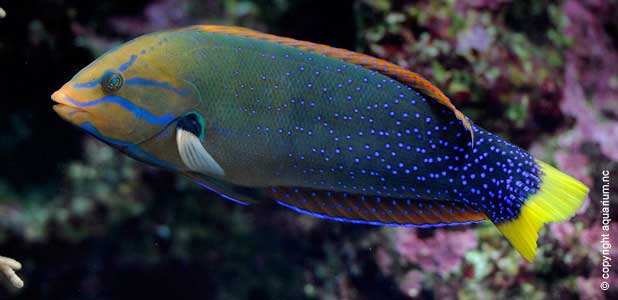
Protégés de l’action des vagues, de fragiles coraux branchus et des alcyonnaires prospèrent offrant le gîte et le couvert à espèces toutes plus colorées les unes que les autres : poissons perroquets, labres, bossus, picots, poissons chirurgiens, girelles sont bien visibles.
Attention danger
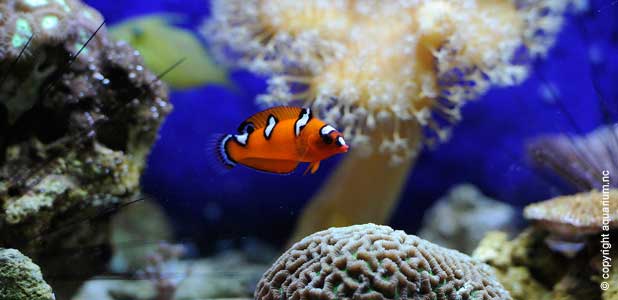
Voici certains animaux que vous serez ravis de rencontrer bien à l’abri derrière une vitre. La rascasse, seigneur magnifique des récifs, nageoires allongées ressemblant à des ailes mais au charme venimeux : sa piqûre provoque maux de tête, fièvre, nausées et difficultés respiratoires Le poisson-pierre est le plus dangereux de tous les animaux marins tropicaux : Immobile, il se dissimule au milieu des cailloux, sur les platiers, parmi les récifs coralliens du lagon ainsi que dans le sable d’où seules quelques épines émergent.
Les acanthasters
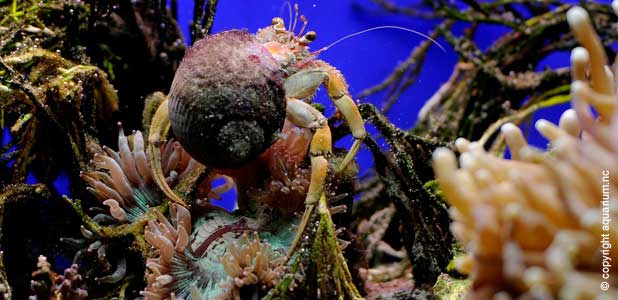
L’étoile de mer épineuse Acanthaster planci, appelée communément « coussin de belle-mère » en Nouvelle-Calédonie, est l’un des constituants de la faune des milieux coralliens. Elle se nourrit des polypes des coraux et peut entraîner la mort de surfaces importantes de récifs si l’espèce se présente en populations denses.
Les tricots rayés
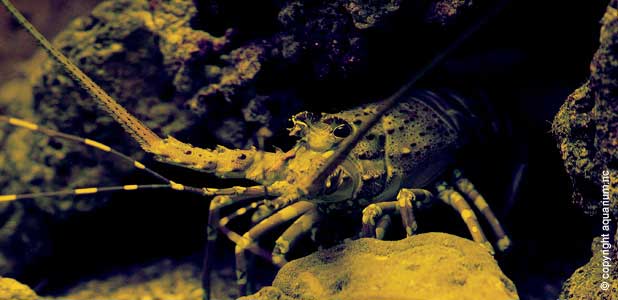
En Nouvelle-Calédonie, 14 espèces de serpents marins ont été répertoriées. L’un des plus célèbres est, sans nul doute le tricot rayé «Laticauda laticaudata». Les tricots rayés de l’aquarium sont conservées dans les bacs au maximum trois semaines : au-delà de cette durée, ils sont relâchés car ces animaux ne se nourrissent pas en captivité, du fait qu’ils se nourrissent exclusivement de murènes (ou poissons anguilliformes).
Le saviez-vous?
Attention tricot !
Parmi la douzaine d’espèces de serpents marins vivant en Nouvelle-Calédonie, le tricot-rayé, est le seul amphibie. Il niche à terre et chasse dans l’eau les jeunes murènes ou poissons longiformes. Muni de 2 crochets à l’avant de sa bouche, il mord et injecte son venin. Heureusement, ce serpent craintif n’est pas agressif.
Camouflage
Parmi les stratégies misent au point par les poissons pour se nourrir ou pour échapper à leurs prédateurs, le camouflage est très intéressant. Les poissons peuvent prendre la forme ou la couleur d’autres espèces ou de l’environnement qui les entoure. Certains prennent la forme d’un objet sans aucun intérêt pour les prédateurs, comme un fragment d’algue flottant. D’autres, prennent la forme et la couleur d’une autre espèce toxique ou ayant très mauvais goût. D’autre encore se déguisent pour ressembler à des espèces amicales, comme le labre nettoyeur.
Œil de lynx
La squille ou crevette mante a l’une des meilleures visions connues du règne animal avec une cornée en trois bandes qui lui donne une vision en trois dimensions. Elle possède 16 différentes sortes de cellules dans la rétine dont certaines pour les UV, d’autres pour la lumière polarisée.
La zone d'exposition
Pour en savoir plus !
Dans cet espace, l’Aquarium vous propose d’approfondir vos connaissances sur des thématiques liées à des espèces ou à des milieux marins, sous forme didactique et ludique. Les expositions sont habituellement renouvelées deux fois par an.
L’Aquarium des lagons organise deux expositions par an.
La mer ouverte
Bienvenue dans le grand bleu !
Vous vouliez voir des requins ? Ils sont là ! Le requin gris et sa ronde menaçante. Le requin léopard, tacheté comme l’animal dont il a pris le nom…. Ils n’impressionnent pas plus que cela la multitude de poissons aux formes et aux couleurs innombrables qui évoluent à leurs côtés. On pourrait passer des heures devant l’écran géant du grand bac.
Le saviez-vous?
Mâle et femelle, le tout-en-un
Les napoléons sont des poissons hermaphrodites. Même si l’on ne on ne connaît pas encore exactement leur processus de sa transformation, on sait avec certitude qu’ils naissent femelle et que certains deviennent mâles en prenant de l’âge. Ce changement de sexe induit un changement de couleur et une évolution de la bosse frontale qui devient plus proéminente encore.
Ça se sent
L’odorat du requin est l’un des plus efficaces du règne animal. Il lui permet de détecter des proies à plusieurs kilomètres de distance. L’eau pénètre dans ses narines et circule dans un sac olfactif. Ce système permet au requin de détecter des odeurs, comme celle du sang, diluées dans plusieurs litres d’eau.
Coupez !
Les poissons chirurgien doivent leur nom à la lame coupante comme un scalpel qu’ils possèdent à la base de leur queue. En cas de danger, ils redressent leurs lames afin de blesser leurs assaillants.
La mer profonde
20 000 lieux sous les mers !
Prenez le temps d’admirer l’étrange ballet des nautiles, montant puis descendant le long de leur tube de verre.
Et souvenez-vous : ce mollusque céphalopode n’a pas évolué depuis 60 millions d’années ! Vous êtes en présence d’un véritable fossile vivant.
Aquarium number one
L’Aquarium de Nouméa a été le premier au monde à présenter des nautiles en permanence au public. Généralement capturés dans des casiers entre 150 m et 300 m de profondeur, ils sont présentés dans des conditions proches du milieu naturel, hormis la pression : lumière bleutée et température de l’eau de 18°C à 20°C.
Ça flotte ?
La coquille externe du nautile comprend une trentaine de loge à l’âge adulte remplies de gaz, permettant de maintenir une flottabilité légèrement négative. L’animal qui habite la dernière loge se propulse grâce à sa « tuyère », située sous sa bouche qui est entourée d’un collier de tentacules et munie de deux mandibules puissantes.
Des bébés !
A l’Aquarium, le premier bébé nautile est né le 20 juin 2000. Les nautiles sont à sexes séparés. Une dizaine de jours après l’accouplement (qui peut durer 24h !), la femelle pond un à six œufs blancs de trois cm de haut. La période d’incubation est de 11 mois à une température de 22°C à 24°C. A l’éclosion, le petit nautile, miniature de l’adulte, sort de l’œuf en quelques heures ou plusieurs jours (36h à 43 jours selon les observations).
La salle de projection
Allumez vos rêves !
Pour terminer la visite, installez-vous confortablement dans la salle de projection pour visionner des films, dont certains sont produits par l’Aquarium et tester vos connaissances sur les écosystèmes marins de Nouvelle-Calédonie. Lorsque l’écran est relevé, la salle de projection ouvre également sur le grand bac.
Profitez gratuitement d’une projection à l’issue de votre visite. Vous pourrez ainsi en apprendre plus sur les espèces croisées dans les aquariums. Ainsi Corail.nc décrit le mode de vie et les fonctions de reproduction des ces étranges animaux, que l’on a longtemps pris pour des végétaux ou des minéraux. Avec Les tortues marines, plongez à la suite des espèces emblématiques du Caillou ; apprenez à les connaître, à mieux les respectez. Le film La mangrove, une forêt sur la mer vous entraine à la découverte de ce milieu mi-terrestre mi-aquatique.
La salle de projection ou salle de conférence est également disponible à la location, comme la zone de visite, pour vos événements d’entreprise, séminaires, etc.
La boutique
Des souvenirs ? Un souvenir !
Cette boutique alléchante, pour petits et grands, propose une vaste sélection d’objets précieux, de souvenirs, de jouets et jeux pédagogiques, autour de l’univers de la nature et des océans. Elle est ouverte toute l’année aux mêmes heures que l’aquarium et est en libre d’accès sans payer de droit d’entrée.

